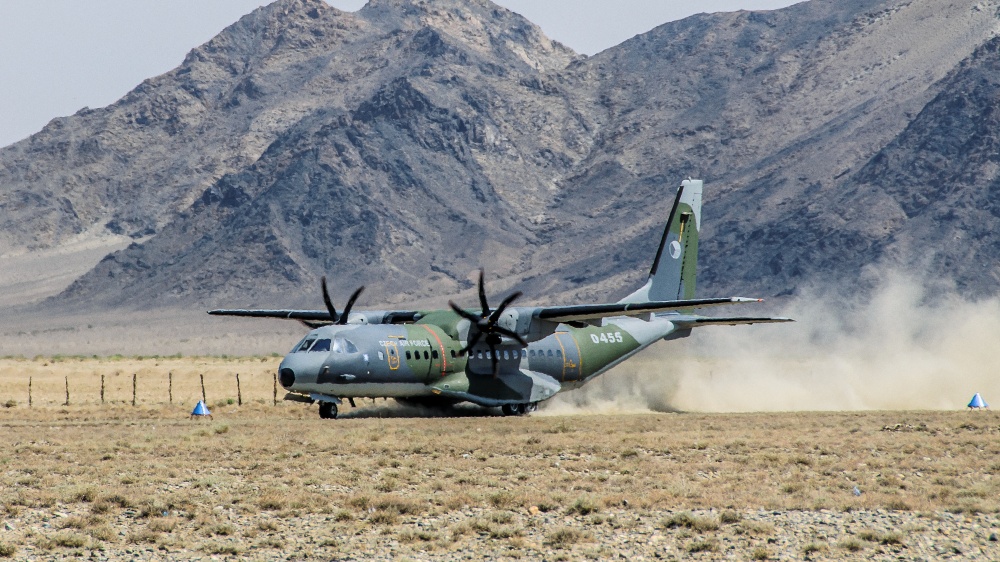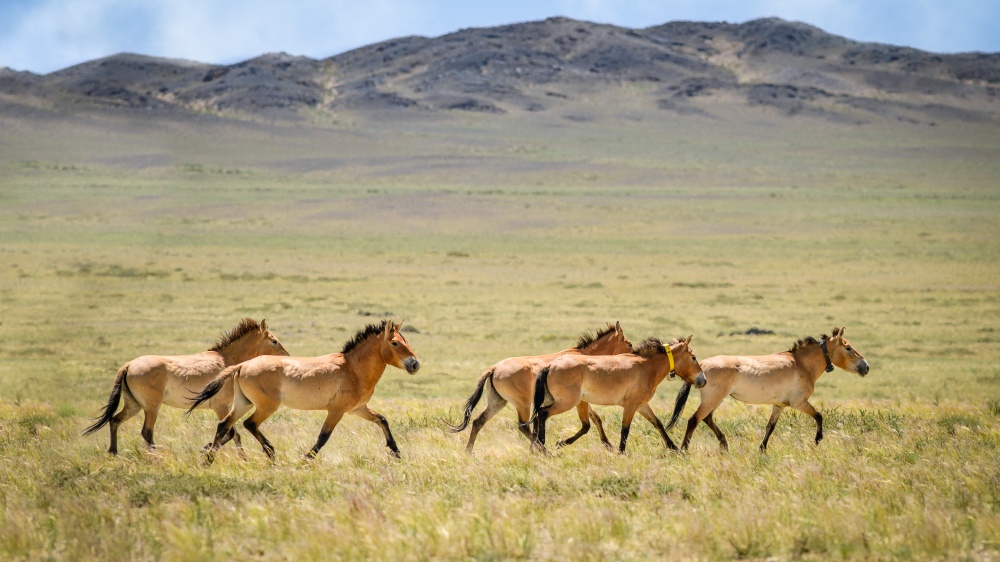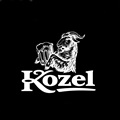Transporting wild horses
Transports of Przewalski’s horses to their original Central Asian homeland typically take place in June or July. The horses are transported in special crates aboard military CASA aircraft to the nearest suitable landing site in the destination country, and from there, they continue overland by lorries to their final destination.

The CASA aircraft carrying Przewalski’s horses landing on the unpaved runway in Bulgam Sum, western Mongolia. Photo: Jaroslav Šimek, Prague Zoo
In cooperation with the coordinator of the EAZA Ex situ Programme (EEP), several suitable horses from different countries are selected for each transport. These are typically young individuals, with factors such as pedigree, physical fitness, and appropriate behavioural traits playing a key role—especially given that the horses spend many dozens of hours en route to their destination, which is both physically and mentally challenging and requires a resilient nature.
Transports organised by Prague Zoo depart not only from the Czech Republic but also from other European countries, such as Germany and Hungary. In 2016, one transport even took place entirely within Mongolia. For transports starting from Prague, the preselected horses are transferred at least six months in advance to the breeding and acclimatisation centre in Dolní Dobřejov, located in the so-called Czech Siberia, around 90 kilometres south of Prague. From there, four main candidates are eventually chosen, along with several reserves. The actual transport begins with the journey from Dolní Dobřejov to the military airport in Prague-Kbely, where the horses are loaded onto a CASA military aircraft.
For transports to the Great Gobi B in Mongolia, there were layovers in Russia’s Kazan and Novosibirsk, while horses destined for the Golden Steppe in Kazakhstan are flown with layovers in Istanbul, Turkey, and Baku, Azerbaijan. During the journey, the horses are accompanied not only by their keepers but also by a veterinarian, who checks regularly their condition. They are also provided with water, hay, and vegetables.
Upon arrival, the horses are initially released into acclimatisation enclosures, where they gradually adjust to the local conditions. To ensure that they have sufficient time to adapt to the upcoming winter, each and every transport is planned for the summer months, when the vegetation period is at its peak. After their first winter, during which they are supplemented with food if necessary, the horses are released into the wild (a process known as soft release). In order to keep track of the horses and their movements even after release, some individuals are fitted with GPS collars. Since the harem typically stays together, this allows researchers to monitor the movements of the entire group.

The Przewalski’s horses in Great Gobi B Strictly Protected Area are monitored with the use of GPS collars. Photo: Petr Jan Juračka








